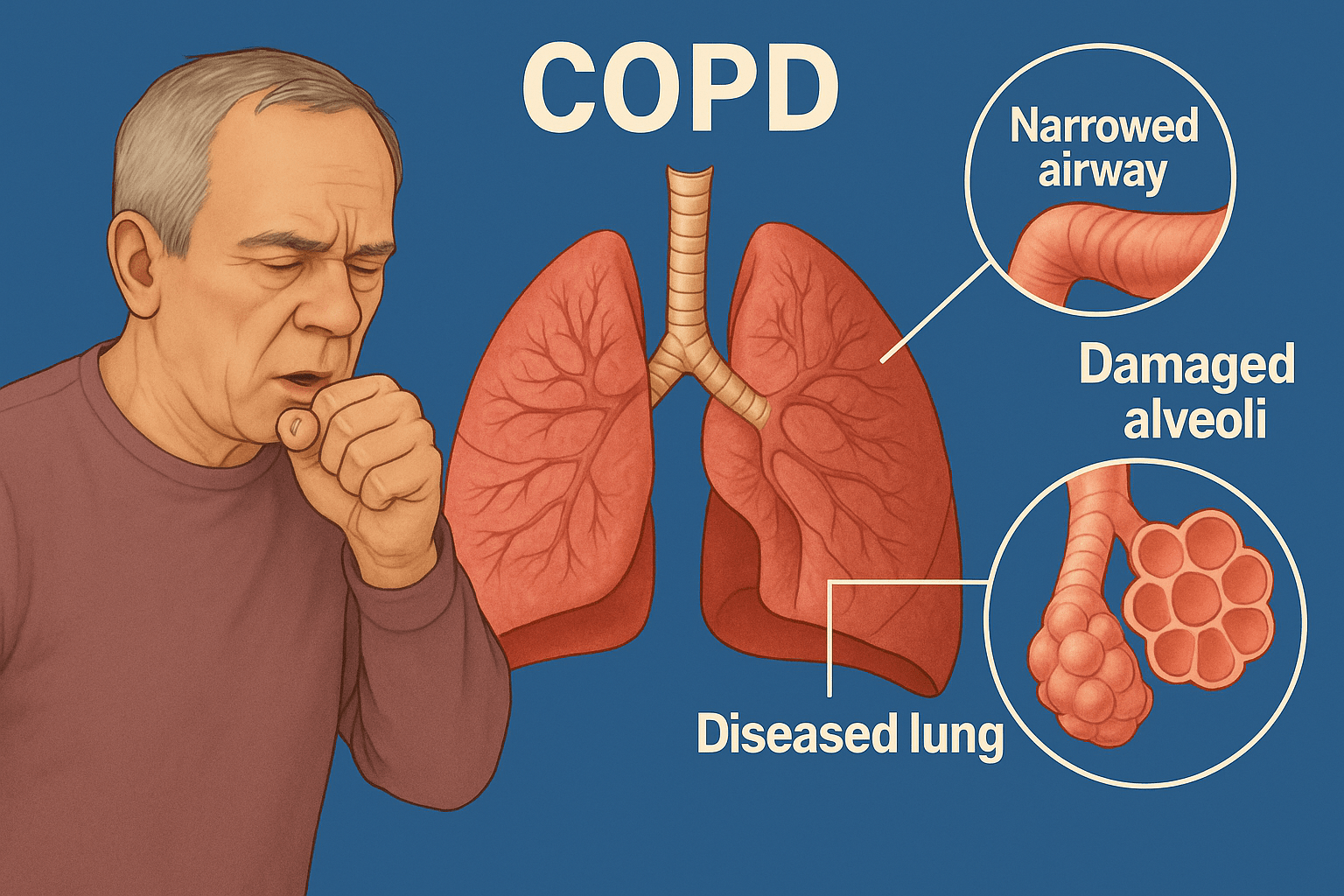Chronic Obstructive Pulmonary Disease (COPD) is a progressive lung condition that impairs airflow, leading to breathing difficulties. It encompasses two primary conditions: emphysema and chronic bronchitis. While COPD is irreversible, early diagnosis and appropriate management can significantly improve quality of life.(Mayo Clinic Health System)
What Is COPD?
COPD is characterized by persistent respiratory symptoms and airflow limitation due to airway and alveolar abnormalities. These changes are usually caused by significant exposure to noxious particles or gases. The disease leads to inflammation and narrowing of the airways, resulting in reduced airflow in and out of the lungs.(Mayo Clinic, Mayo Clinic News Network)
Causes and Risk Factors
The primary cause of COPD is long-term exposure to irritants that damage the lungs and airways. The most significant risk factors include:
- Smoking: The leading cause of COPD, with risk increasing with the number of cigarettes smoked and the duration of smoking.
- Environmental Exposures: Long-term exposure to air pollution, chemical fumes, and dust.
- Occupational Hazards: Exposure to dusts and chemicals in the workplace.
- Genetic Factors: A rare genetic disorder known as alpha-1 antitrypsin deficiency can cause COPD, even in nonsmokers.(Wikipédia)
Symptoms of COPD
COPD symptoms often develop slowly and may not be noticeable until significant lung damage has occurred. Common symptoms include:
- Chronic cough
- Shortness of breath, especially during physical activities
- Wheezing
- Chest tightness
- Frequent respiratory infections
- Fatigue(Mayo Clinic, Mayo Clinic)
As the disease progresses, symptoms may become more severe, leading to increased difficulty in daily activities.
Diagnosis
Diagnosing COPD involves a combination of medical history, physical examination, and diagnostic tests:
- Spirometry: A pulmonary function test that measures the amount of air a person can inhale and exhale, and how quickly.
- Imaging Tests: Chest X-rays or CT scans can provide images of the lungs to detect emphysema and other lung conditions.
- Arterial Blood Gas Analysis: Measures oxygen and carbon dioxide levels in the blood to assess lung function.(Mayo Clinic)
Treatment and Management
While there’s no cure for COPD, treatment can help control symptoms and improve quality of life:
- Smoking Cessation: The most crucial step in slowing disease progression.
- Medications: Bronchodilators, inhaled steroids, and combination inhalers help reduce inflammation and open airways.
- Pulmonary Rehabilitation: A program that includes exercise training, nutritional advice, and education.
- Oxygen Therapy: For patients with severe COPD and low blood oxygen levels.
- Surgical Options: In select cases, procedures like lung volume reduction surgery or lung transplantation may be considered.(Mayo Clinic)
Prevention
Preventing COPD involves reducing exposure to risk factors:(Wikipédia)
- Avoid smoking and exposure to secondhand smoke.
- Use protective equipment if exposed to dust and chemicals at work.
- Ensure good indoor air quality.
- Regular vaccinations to prevent respiratory infections.(Wikipédia)
For more detailed information on COPD, including symptoms, causes, and treatments, please visit the Mayo Clinic’s comprehensive guide: (Mayo Clinic).

